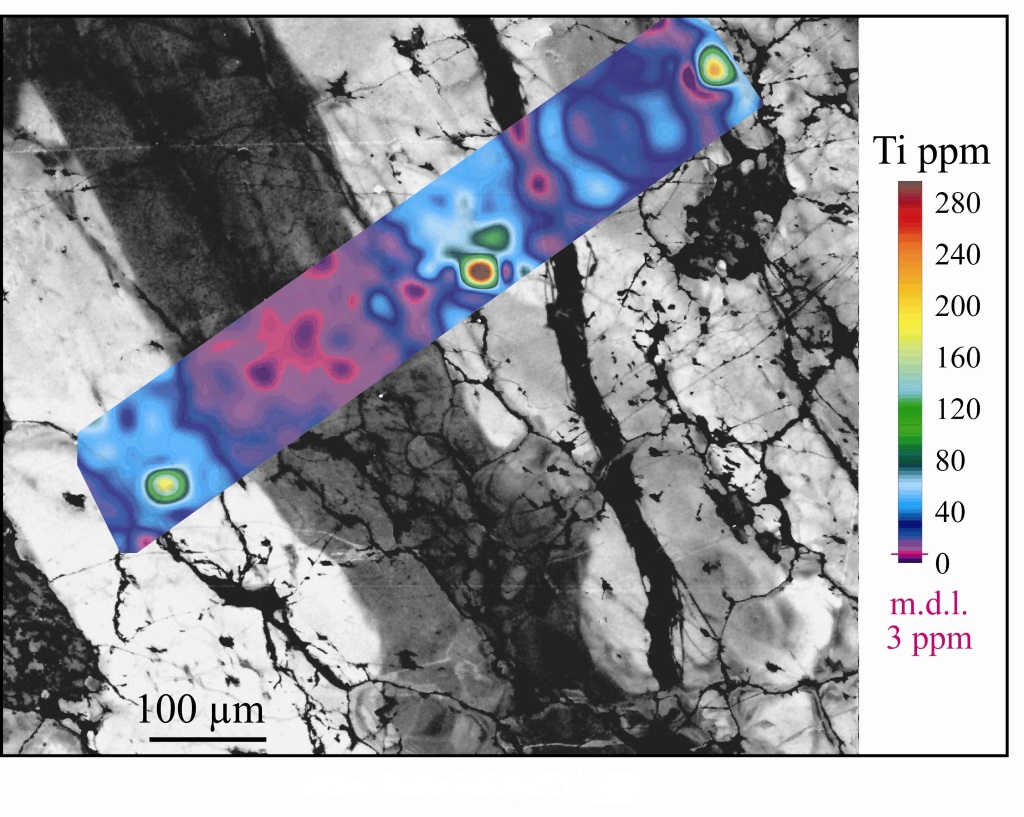I would be interested to know if this scaling of detection limits and precision is what might be expected during quantitative mapping, given the assumptions listed above.
Hi Andrew,
I think you are correct. The precision will increase or decrease with each doubling or halving of the pixel dwell time, by the Sqrt(2). This of course assumes Gaussian statistics, while x-ray counting is more accurately described by Poisson statistics, but it's close enough and a lot easier to calculate!
Next time you have a chance check the "Calculate Projected Detection Limits" option under Calculation Options in the Analyze! window, and the program will display a range of estimated detection limits based on the counting time of the actual analysis. Here is an example from a synthetic zircon:
Projected Detection Limits (99% CI) in Elemental Weight Percent (Average of Sample):
ELEM: Th Hf U P Y
TIME: 10.00 10.00 10.00 10.00 10.00
PROJ: .035 .028 .031 .007 .048
TIME: 20.00 20.00 20.00 20.00 20.00
PROJ: .025 .020 .022 .005 .034
TIME: 40.00 40.00 40.00 40.00 40.00
PROJ: .018 .014 .015 .003 .024
TIME: 80.00 80.00 80.00 80.00 80.00
PROJ: .012 .010 .011 .002 .017
TIME: 160.00 160.00 160.00 160.00 160.00
PROJ: .009 .007 .008 .002 .012
TIME: 320.00 320.00 320.00 320.00 320.00
PROJ: .006 .005 .005 .001 .008
TIME: 640.00 640.00 640.00 640.00 640.00
PROJ: .004 .003 .004 .001 .006
TIME: 1280.00 1280.00 1280.00 1280.00 1280.00
PROJ: .003 .002 .003 .001 .004
TIME: 2560.00 2560.00 2560.00 2560.00 2560.00
PROJ: .002 .002 .002 .000 .003
TIME: 5120.00 5120.00 5120.00 5120.00 5120.00
PROJ: .002 .001 .001 .000 .002
TIME: 10240.0010240.0010240.0010240.0010240.00
PROJ: .001 .001 .001 .000 .001
TIME: 20480.0020480.0020480.0020480.0020480.00
PROJ: .001 .001 .001 .000 .001
TIME: 40960.0040960.0040960.0040960.0040960.00
PROJ: .001 .000 .000 .000 .001
The bolded lines are the actual acquisition time.
This sensitivity limitation for x-ray mapping due to (humanly) reasonable dwell times per pixel, is also a reason why the blank correction, which is normally in the sub 50 PPM range, is not necessary when performing most x-ray mapping as seen here, where the on-peak dwell time per pixel is only 3 seconds:
http://probesoftware.com/smf/index.php?topic=42.msg4813#msg4813Yes, with a single point analysis we can acquire for hundreds of seconds per point (e.g., my claim of 2-3 PPM of Ti in quartz in Donovan et al., Amer. Min., 2011 using 5 spectrometers aggregated), but a 128 x 128 pixel map consisting of 300 seconds per pixel would take 1365 hours or 56 days!
It would be a gorgeous map though. I did something similar a few years ago by acquiring a grid of point analyses on a quartz from Butte, MN, using Probe for EPMA with some 400 points and after Kriging the data in Surfer I got a map like this after about a week of acquisition:

This image is a figure from the above mentioned Amer. Min. paper.
john